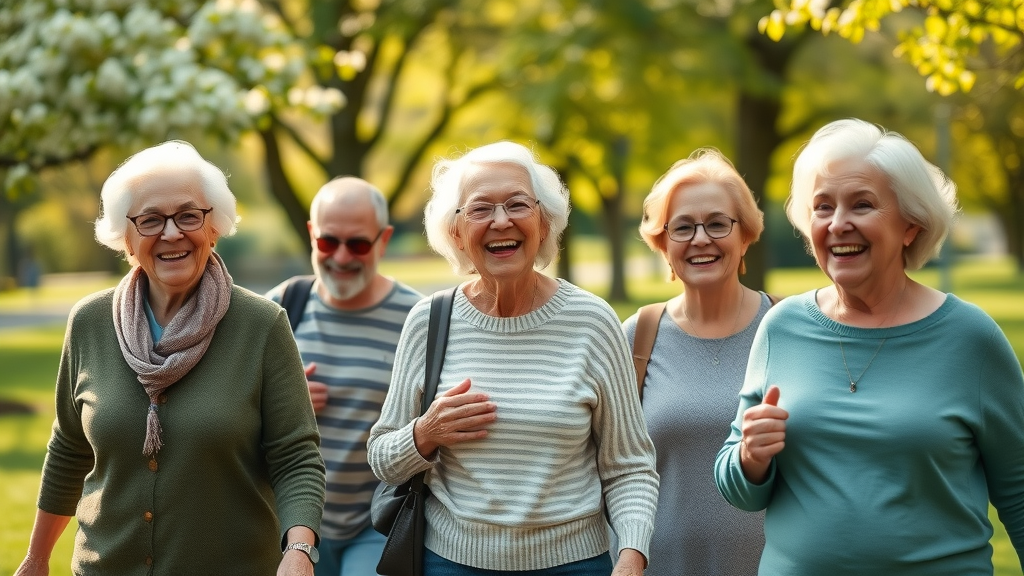
Did you know that only 35% of adults aged 65 and older meet the recommended physical activity guidelines ? Yet, those who regularly get moving can reduce their risk of chronic disease by up to 40% . In a world where living longer is the norm, staying vibrant, strong, and independent depends not just on good genes—but on the amount and type of movement you do each day. Whether you’re just starting out or looking to shake up your routine, this guide has everything you need to get off that chair and back into action.
Startling Facts: Why Physical Activity for Elderly is More Important Now Than Ever
“Only 35% of adults aged 65 and older meet the recommended physical activity guidelines, yet regular movement could reduce the risk of chronic disease by up to 40%.” – World Health Organization
Staying physically active as an older adult isn't a luxury—it's essential. With an aging population in the United States and across the globe, there's mounting evidence that regular physical activity directly impacts longevity, cognitive abilities, and quality of life. Sedentary lifestyles are a major risk factor for chronic conditions such as heart disease, diabetes, and arthritis. In fact, the Centers for Disease Control and Prevention highlight that inactivity greatly increases the risk of falls —a leading cause of injury for seniors. This makes it more important than ever to follow physical activity guidelines specifically designed for older adults.
Additionally, experts agree that becoming physically active at any age, regardless of current fitness level, can yield major health benefits . With improvements in muscle strength , energy, and mental health, starting a new routine is always worth the effort. Read on to understand how small, consistent changes can lead to remarkable outcomes, empowering you to live independently and joyfully.
Physical Activity for Elderly: Key Concepts and What You’ll Learn
- Scientific basis behind physical activity for elderly
- How physical activity guidelines are designed for older adults
- Practical examples of aerobic activity and strengthening activities
- Strategies for addressing chronic conditions
- Actionable tips for safe and enjoyable activity
Understanding Physical Activity Guidelines for Older Adults
What Are the Physical Activity Recommendations for Elderly Individuals?
Physical activity guidelines for older adults recommend at least 150 minutes of moderate-intensity aerobic activity each week , paired with muscle-strengthening activities on at least two days a week. These recommendations were developed by top health authorities—including the World Health Organization and guidelines for Americans —after careful review of the latest research into senior wellness. The goal: to foster muscle strength , cardio health, and mobility, while reducing the risk of chronic disease, falls, and loss of independence.
Why these numbers? Studies show that consistent, moderate to vigorous movement—like brisk walking, dancing, or swimming—improves cardiovascular health, cognitive function, and overall wellbeing . Strength training, meanwhile, preserves muscle mass and bone density, both of which naturally decline with age. Each component of this activity guide is designed to address the unique needs of older adults , helping individuals remain strong, resilient, and capable in daily life.
Equally important are balance and flexibility routines, which protect against falls and help manage chronic conditions . The official physical activity guidelines for elderly encourage mixing activities to ensure both enjoyment and total-body wellness. With structured yet flexible recommendations, anyone can tailor their schedule to fit personal abilities and preferences, and safely progress toward a more active lifestyle.
| Type of Activity | Frequency | Duration | Example |
|---|---|---|---|
| Moderate Aerobic Activity | 5x/week | 30 min | Walking, cycling |
| Strengthening Activities | 2x/week | 20 min | Resistance bands, weights |
| Flexibility & Balance | 3x/week | 10 min | Yoga, stretching |
Physical Activity for Elderly: Types, Intensity, and Health Benefits
Aerobic Activity vs. Strengthening Activities: What’s Best for Older Adults?
Aerobic activity —like brisk walking, cycling, or swimming—focuses on increasing heart rate and breathing while being gentle enough for daily enjoyment. These activities support a healthy heart, improve oxygen flow throughout the body, and can be easily adapted for different mobility levels. For older adults, maintaining regular aerobic sessions is crucial for boosting endurance, controlling body weight, and keeping the mind sharp.
Strengthening activities —resistance band exercises, lifting light weights, or using bodyweight—are equally important. They bolster muscle strength and preserve bone density, both vital for reducing the risk of falls and maintaining independence. While aerobic activity supports the cardiovascular system, muscle-strengthening exercises fortify bones and joints, helping reduce the risk of injuries common among the elderly.
The best activity guide for older adults is a balanced mix: aim for both aerobic and strengthening sessions throughout the week. By alternating, you ensure both your heart and muscles get the attention they deserve. This holistic approach, recommended by physical activity guidelines globally, keeps the routine engaging, safe, and accessible at most fitness levels.
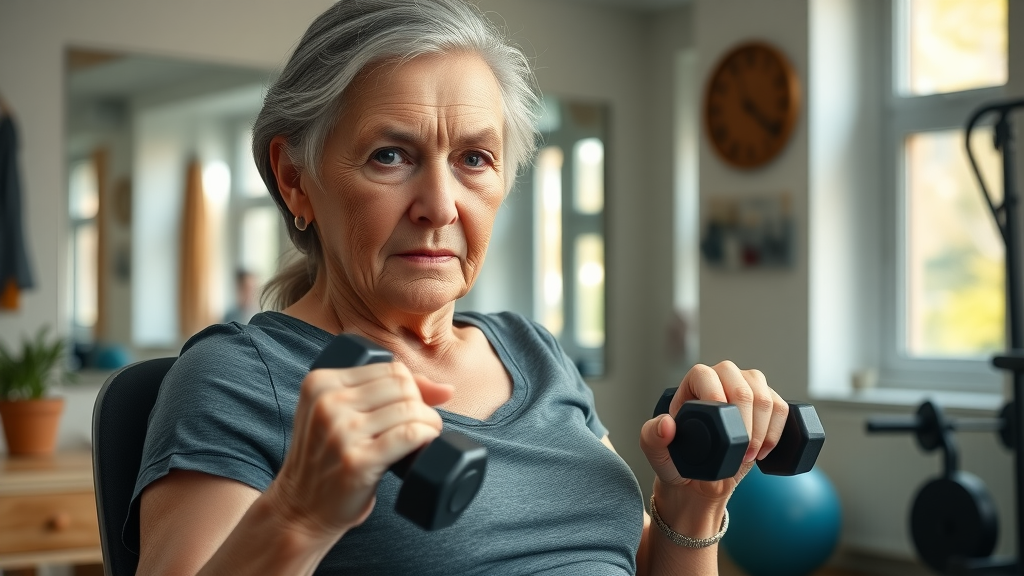
Health Benefits of Regular Physical Activity for Elderly
- Improved cognitive function
- Reduced likelihood of chronic conditions
- Enhanced muscle strength and bone density
- Better balance, flexibility, and reduced fall risk
- Elevated mood and energy levels
Making physical activity a staple can greatly reduce the risk of heart disease, type 2 diabetes, osteoporosis, and even certain cancers. Research also shows that being physically active slows cognitive decline and lowers the risk of dementia. For those with existing chronic conditions , movement often eases symptoms, enhances mobility, and provides pain relief.
In addition to preventing illness, regular movement builds stronger social connections when done in groups, boosts confidence, and enhances overall mood by prompting the release of endorphins. For older adults, the health benefits are substantial and multifaceted—proving it's never too late to start moving more.
Physical Activity Guide: Practical Routines and Examples for Everyday Movement
Low-Impact Physical Activity for Elderly: Walks, Chair Exercises, and More
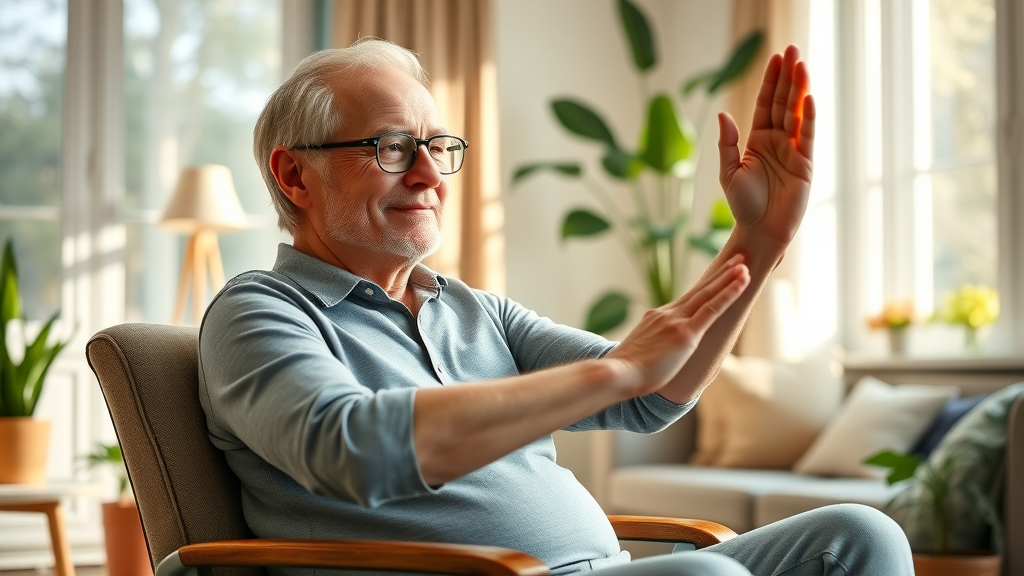
- Walking outdoors or indoors
- Swimming and water aerobics
- Seated strength routines
- Yoga for flexibility
- Gentle cycling
Low-impact physical activities are ideal for those managing chronic conditions or mobility challenges. Walking—a top pick for many older adults —can be performed indoors or outdoors, adapted for speed, and easily made social by including friends or family. Water aerobics and swimming provide cardio and muscle benefits with reduced stress on joints, making them excellent options for people dealing with arthritis or balance issues.
Chair-based exercises are invaluable for those with limited mobility. These routines promote muscle strength and flexibility through slow, controlled movements—think gentle stretches, seated leg lifts, or light resistance band work. Incorporating balance and flexibility elements with yoga or tai chi further improves posture and ease of movement. Keeping a mix of these activities in your schedule helps ensure enjoyable, safe progress at your own pace.
(Watch our curated video tutorial for step-by-step chair exercises specifically designed to boost muscle strength in older adults. These can be followed daily and require minimal equipment!)
Building a Weekly Activity Guide for Older Adults
A sample weekly activity guide can help establish a new routine, regardless of fitness level. For beginners, try three shorter sessions of 15–20 minutes spread across the week, mixing walking, gentle cycling, and seated stretches. As endurance and confidence increase, progress to five days a week, including 30-minute moderate-intensity aerobic activities paired with strength exercises on two days. More experienced individuals might add short bursts of higher-intensity movement—such as brisk hill walks or resistance circuits—to boost results while still honoring body limitations.
Always remember to schedule flexibility and balance exercises—three times per week is ideal for most older adults. This prevents stiffness and improves independent functioning. For those managing chronic conditions , it's best to consult with a health care provider to personalize your approach and ensure routines are both safe and effective. Tracking progress, setting achievable goals, and adjusting the schedule according to how you feel ensures sustained success.
Consistency is key: mark activity times on your calendar, build a community for accountability, and seek out new classes or community events to stay engaged. By structuring your week in line with physical activity guidelines , you’ll see gains in mobility, mood, and overall health with every session.
Addressing Chronic Conditions through Physical Activity for Elderly
How to Safely Adapt Physical Activity for Chronic Conditions
Many older adults manage one or more chronic conditions , such as arthritis, diabetes, or cardiovascular disease. The good news is that physical activity can not only be safe for these individuals but also promote symptom relief and overall better health. Personalized routines might focus more on low-impact activities—like swimming for joint pain or chair-based strength exercises for those with balance or mobility limits.
Always speak with your health care provider before beginning a new exercise regimen, especially if you’re dealing with complex medical needs. They can recommend specific modifications, help monitor progress safely, and alert you to any red-flag symptoms. As the saying goes:
“There is no one-size-fits-all approach. Always consult your healthcare provider before starting a new exercise regimen.” – Geriatric Health Specialist
Using adaptive devices, taking regular breaks, and listening to your body are crucial. Together with your doctor, you can tailor a plan that fits your medical goals, respects your boundaries, and focuses on long-term, sustainable progress. The smallest increase in daily movement can lead to dramatic improvements in comfort and independence for those managing chronic health issues.
People Also Ask: What is the recommended physical activity for the elderly?
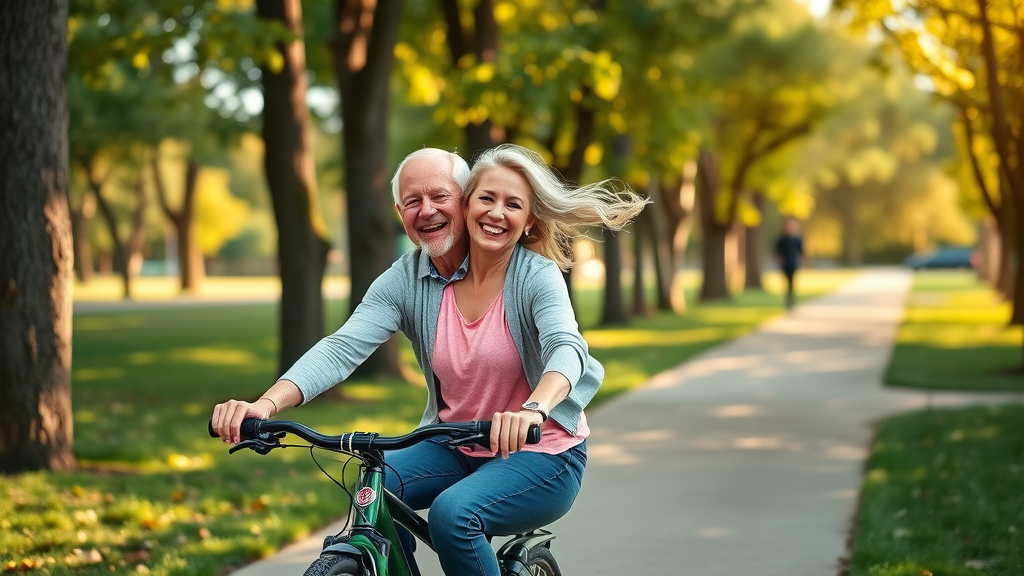
The recommended physical activity for elderly individuals includes at least 150 minutes of moderate-intensity aerobic activity each week —such as brisk walking, gentle cycling, or dancing—plus two days of muscle-strengthening activities . Older adults should also do regular balance and flexibility training to reduce falls and maintain independence. These standards, echoed in many gov websites and guidelines for Americans , create a safe and effective roadmap.
People Also Ask: What is the physical activity for 70 year olds?
For 70-year-olds and other older adults, physical activity guidelines mirror those for all elderly: a blend of moderate aerobic movement—such as brisk walking or water aerobics—strengthening routines, and regular balance-flexibility exercises like yoga. Adaptations should be made for personal limitations, medical conditions, or current fitness levels, and safety always comes first. Consulting a trusted health care professional can help create a tailored plan for the best results.
Even if starting from a baseline of little activity, progress is possible. Begin with as little as 5–10 minutes a day, then gradually add more as endurance grows. Group classes, adapted sports, and community events can also provide structure and accountability—making the journey more enjoyable and effective.
People Also Ask: What are 5 examples of physical activity?
Five practical and effective physical activities for elderly people include:
- Brisk walking (indoors or outdoors)
- Chair yoga or chair-based strength routines
- Water aerobics and swimming
- Resistance band exercises
- Gentle cycling (stationary or outdoor)
These examples cater to various mobility levels and can be adjusted for different fitness needs. Whether joining a group class or exercising alone, these routines deliver the combined health benefits of aerobic, strength, and flexibility work.
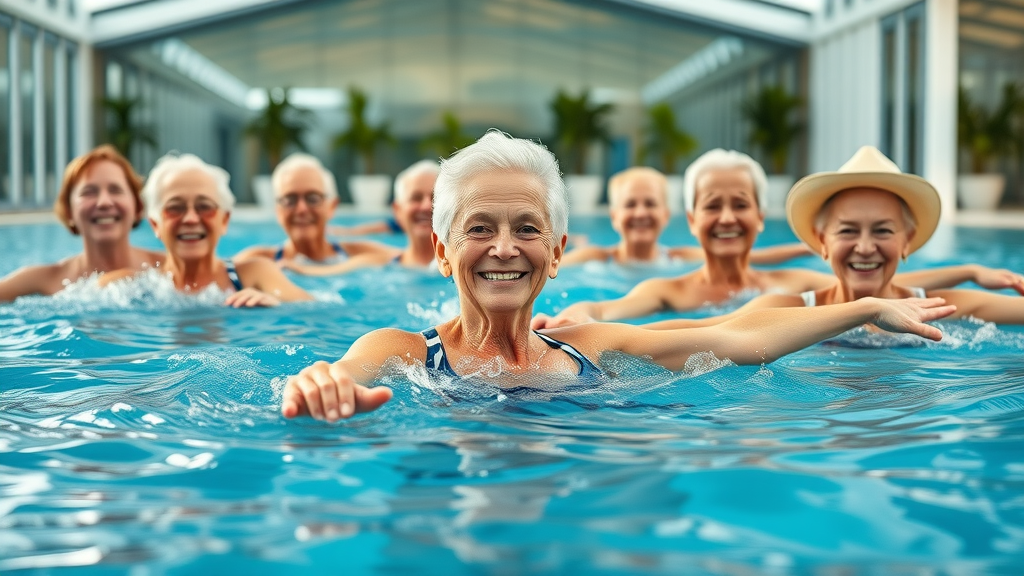
People Also Ask: Which type of exercise is most strongly recommended for older adults?
Both aerobic activities and functional strength exercises are most strongly recommended for older adults. Aerobic workouts—such as walking, cycling, or dancing—promote cardiovascular health and overall stamina, while strength-training moves maintain muscle strength and help prevent falls. For whole-body wellness, physical activity guidelines advise mixing endurance, strength, and balance work. Flexibility routines like yoga or stretching add the finishing touch, ensuring seniors stay limber and independent.
The best results come from variety and adapting routines over time. Listening to your body, using proper equipment, and seeking out social support will help ensure a sustainable, effective regimen.
Developing Safe and Sustainable Physical Activity Habits for Older Adult Wellness
Tips for Overcoming Barriers to Physical Activity for Elderly
- Start slow and gradually increase intensity
- Involve friends, family, or classes for motivation
- Schedule regular activity times
- Listen to your body and modify routines as needed
- Celebrate milestones
It’s common to face hurdles—joint pain, motivation dips, or lack of time—but small adjustments can make all the difference. If you’re unsure where to start, joining community classes or finding an “exercise buddy” offers support and encouragement. Using apps or journals to record progress and celebrate small wins can further sustain enthusiasm. Remember, progress matters more than perfection.
Ensuring Safety: Equipment, Supervision, and When to Seek Help
Using proper equipment, like non-slip shoes and supportive gear, reduces risks and boosts confidence. Many older adults benefit from supervised settings, especially when new to exercise or recovering from injury. Local community centers, senior gyms, and gov websites often provide resources, class recommendations, and helpful videos. And always respect your body’s signals—dizziness, sharp pain, or shortness of breath are clear signs to pause activity and consult your health care provider.
Creating an environment free of tripping hazards and ensuring clear space for movement is crucial. Keep water nearby, warm up before and cool down after sessions, and never push through discomfort. Remember, safety first: when in doubt, get expert advice. This sets the stage for a lasting, positive experience with physical activity.
Video Overview: Essential Safety Tips for Physical Activity for Elderly
(View our essential safety video to learn best practices for starting and advancing your physical activity routine as an older adult.)
FAQs on Physical Activity for Elderly
-
How much activity is too much?
Most older adults can safely increase activity following the recommended activity guidelines . However, overexertion can lead to fatigue, injury, or persistent pain. Listen to your body, rest as needed, and talk to your doctor if you feel unwell during or after activities. -
Can physical activity slow cognitive decline?
Yes! Research strongly supports that regular movement can help slow the progression of cognitive impairment , sharpen memory, and aid focus in older adults. Activities like dancing or brisk walking have especially strong brain-protective benefits. -
What to do if chronic pain or fatigue occurs?
If you experience chronic pain, fatigue, or new symptoms during exercise, pause your routine and consult a health care provider. Adjusting the type, intensity, or frequency of activities may help make movement safer and more enjoyable. -
Are group classes or individual routines better for older adults?
Both offer benefits—group classes provide structure, motivation, and socialization, while individual routines can be tailored to specific needs and schedules. Many older adults combine both to maximize results and enjoyment.
Empowering Older Adults to Lead Active Lives: Success Stories and Inspiration
“It’s never too late to get started! At 80, I walk daily and feel better than I did at 60.” – Active Senior
Every journey starts with a single step—whether that's a gentle stroll, simple stretch, or lifting a light weight for the first time. Countless older adults have discovered the mental, physical, and social rewards of staying active. Their stories prove that age is no barrier to improvement. With determination and the right support, anyone can achieve new heights of wellness.
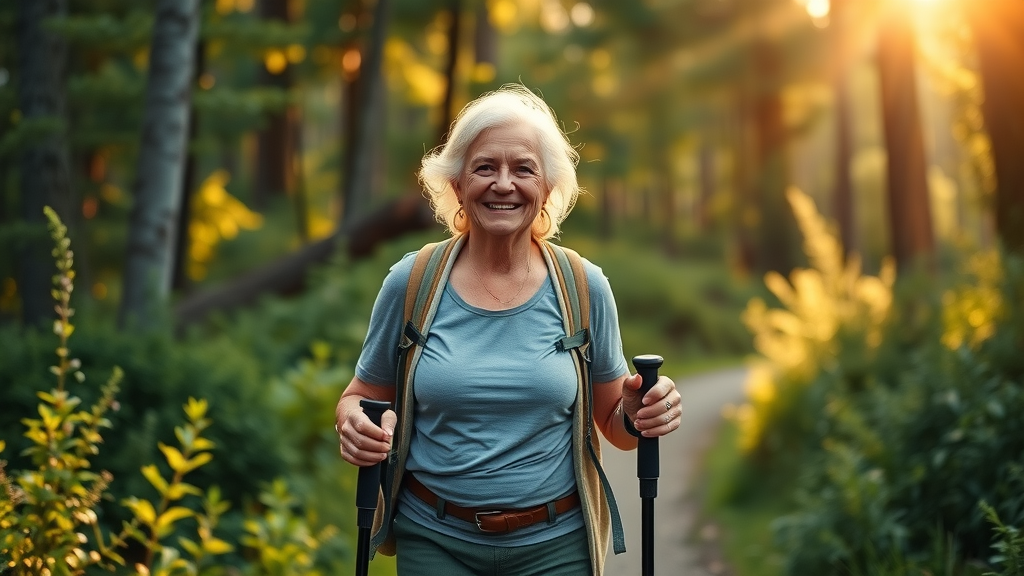
Ready to Enhance Your Wellbeing? Start Your Physical Activity for Elderly Journey
Discover more empowering content on senior health, wellness routines, and lifestyle tips by visiting https://ElderEarth.us . Take your first step towards a healthier, more active tomorrow.
Take Action: Start small, stay consistent, and don't be afraid to seek support. The best time to begin your physical activity journey is today!
Engaging in regular physical activity is crucial for older adults to maintain health and independence. The Centers for Disease Control and Prevention (CDC) provides comprehensive guidelines tailored for individuals aged 65 and older. Their resource, Older Adult Activity: An Overview , outlines recommended types and amounts of physical activity, emphasizing the importance of aerobic, muscle-strengthening, and balance exercises. Additionally, the CDC’s page on Adding Activity Recommendations for Older Adults offers practical tips on incorporating these activities into daily routines, ensuring safety and effectiveness. By following these guidelines, older adults can enhance their quality of life and reduce the risk of chronic diseases.
 Add Element
Add Element  Add Row
Add Row 



Write A Comment